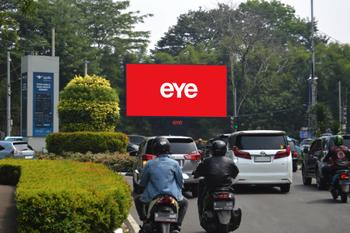We recently connected with Judita Jesovaite, Global Head of Digital Out-of-Home Solutions at Group M Nexus, at our Broadsign Customer Summit in Barcelona. Speaking to an audience of OOH media owners, she shared her buy-side perspective on omnichannel campaigns and what advertisers and marketers are looking for when it comes to out-of-home and its role within the broader space. Having worked across different media channels, she’s worn many hats, making her well-versed in ad channels beyond out-of-home (OOH).
Omnichannel advertising strategies remain a big topic in our industry, primarily because of advertisers’ main objective, which is to drive sales. Brands are constantly competing for the attention of their consumers, and it’s getting harder for them to stand out and cut through the noise. Judita explains why here:
The omnichannel shift: from a channel-specific approach to holistic brand encounters
As Judita mentions in the clip above, the channel-specific approach, which provided advertisers with multiple ways of reaching their intended audience, is also what caused the fragmentation of audiences and media channels, preventing them from creating a unified story across all touchpoints. This led advertisers to look for a more holistic way of executing their strategies, bringing on the omnichannel approach that prioritizes audiences over channels. The new approach allowed advertisers to centralize their media planning, buying and optimization. This, in turn helped them revolve the fragmentation not only between digital channels but also between offline and online media.
Advertisers can also create more efficient engagement strategies with the omnichannel approach by telling the same story across all the different channels and touchpoints. Furthermore, at a time when brands are facing increasing pressure to maximize their budgets and do more with less, the omnichannel approach provides them with the agility to adapt to market changes, developments in the industry and consumer sentiment.
However, it’s important to note that omnichannel is not just about bringing all of the channels together. Here’s Judita with more:
Where does out-of-home currently stand
Judita presented global figures based on Group M’s industry report for 2024-2025.
In 2023, OOH was forecasted to grow 10.3%, and it’s predicted to surpass pre-pandemic levels this year. Currently worth $34.4 billion, OOH is projected to grow over the next couple of years, although at a more modest rate.
The medium’s growth is primarily being led by digital out-of-home (DOOH) which can be attributed to the increased availability of new supply and the flexibility of the channel. These two factors will make OOH more accessible to advertisers and give them more control over how they invest their budgets. For 2024, Group M’s projections show that DOOH will grow by 14.6%, reaching 14.2 billion and making up 38% globally of total OOH shares.
When looking at OOH’s growth in comparison to other traditional media, it has managed to back very quickly from the pandemic and is projected to grow at a faster rate than other channels. Despite its promising growth, OOH currently represents only 4% of total ad spend. However, Judita is not worried and neither should you be. Here’s Judita with why:
Omnichannel & (D)OOH
Looking at Digiday and Amazon Ads’ State of Omnichannel in 2023 report, OOH is being included in the omnichannel mix, but most likely by brands that are already familiar with out-of-home or have experience with it. Judita explains why here:
There are three main reasons advertisers are adopting omnichannel strategies; to build trust and loyalty with their customers, to increase sales, and to improve brand awareness. So, what are they doing to achieve these objectives? According to the Digiday and Amazon Ads’ report and a DPAA study, removing silos is key, which includes:
- Using a single team to execute and run omnichannel campaigns
- Taking DOOH out of traditional OOH media planning silo for better integration with cross-channel buys.
With regards to how advertisers are using DOOH in their omnichannel strategies; in addition to being able to complement their digital plans, the two primary reasons for the addition of the medium are for its geo-targeting and contextual targeting capabilities.
What can we do to accelerate growth?
With a better idea of where DOOH stands today within the omnichannel mix, Judita provided media owners with three factors that can help accelerate growth. The first factor is programmatically enabled flexibility and precisions. Judita explains why:
Another factor is supply availability. Looking at DPAA’s study on Advertiser Perceptions, advertisers stated that they would be more likely to include DOOH in the omnichannel mix if they had access to inventory through their preferred platforms. This desire from advertisers has brought on the rise of omnichannel demand-side platforms (DSPs), as advertisers are able to access a vast number of channels through a single platform.
Finally, the more DOOH matures and is brought into the omnichannel mix, the more likely OOH will be expected to meet the expectations advertisers have with other channels. Judita provides more details on this:
DOOH in the eyes of the consumer: It’s effective
Group M Nexus conducted a study with Kantar in 2022, which found that DOOH is well-received among consumers. The majority of them found the medium to be very innovative and useful for learning more about products and brands. In fact, 94% of surveyed consumers found QR codes included in DOOH ads to be useful.
Another notable finding was that consumers actually see DOOH more positively than other channels:
- DOOH scored 6% higher than TV when it came to brand perception
- DOOH scored 7% higher than online ads for trustworthiness
- DOOH scored 16% higher than newspapers for creativity
Moreover, despite historically being seen as a branding channel, DOOH is showing increased traction as a performance medium, with many consumers saying it inspires interaction and encourages them to make a purchase. These results demonstrate that DOOH can be a great ally and primer for other channels.
When looking at the effectiveness of DOOH when paired with other channels, Kantar’s study found that:
- Using DOOH and mobile ads together drives 69% more store traffic
- Combining DOOH with TV ads drives 55% in brand lift
- Pairing DOOH with social ads leads to 50% higher brand recall
To conclude her session, Judita provided media owners with concrete examples of how you can integrate DOOH with other channels today:






